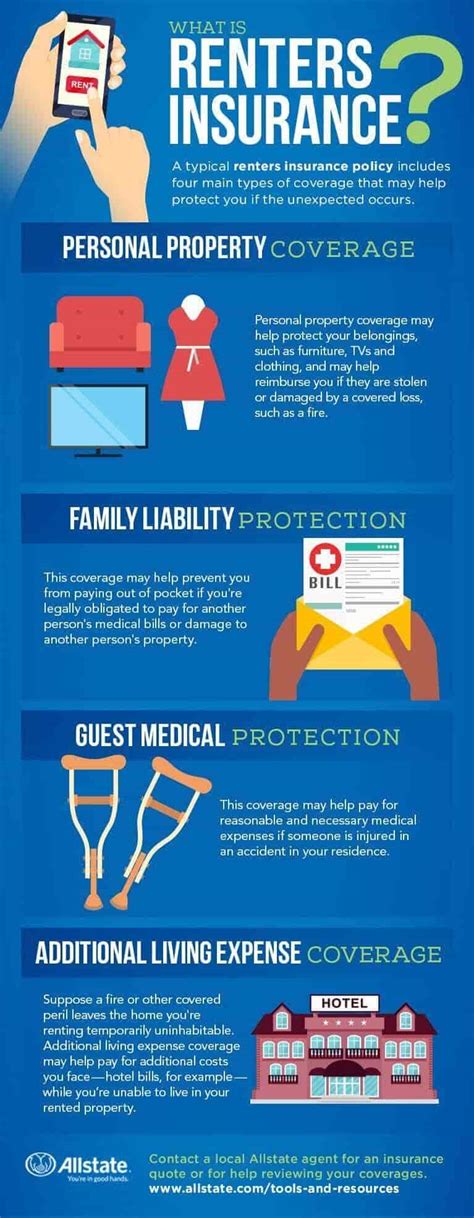Insurance Premiums

In today's world, insurance has become an essential aspect of financial planning, offering individuals and businesses protection against unforeseen circumstances. However, one of the key concerns for many policyholders is the cost of insurance premiums. Understanding the factors that influence insurance premiums is crucial for making informed decisions and managing financial obligations effectively.
This in-depth analysis aims to explore the intricate world of insurance premiums, shedding light on the variables that impact their calculation. By delving into real-world examples and industry insights, we will uncover the intricacies of premium pricing and provide valuable knowledge to navigate the insurance landscape with confidence.
The Complexity of Insurance Premiums

Insurance premiums are the financial commitments individuals and businesses make to secure insurance coverage. These premiums are determined by a complex interplay of factors, each contributing to the overall cost. Understanding these factors is key to unraveling the mysteries behind insurance pricing.
Risk Assessment: The Foundation of Premium Calculation
At the core of insurance premium calculation lies risk assessment. Insurers meticulously evaluate potential risks associated with each policyholder to determine the likelihood of claims. Factors such as age, health status, occupation, and lifestyle choices play a pivotal role in this assessment.
For instance, consider a young, healthy individual seeking life insurance. Their premium would likely be lower compared to an older individual with pre-existing health conditions. Similarly, individuals engaged in high-risk occupations or adventurous hobbies may face higher premiums due to the increased likelihood of accidents or injuries.
| Risk Factor | Impact on Premium |
|---|---|
| Age | Generally, younger individuals pay lower premiums as they are less likely to make claims. |
| Health Status | Pre-existing conditions or chronic illnesses can lead to higher premiums. |
| Occupation | Risky occupations may result in increased premiums due to potential accidents. |
| Lifestyle Choices | Activities like smoking or extreme sports can impact premium rates. |

In the case of property insurance, risk assessment considers factors like the location of the property, its age, and the likelihood of natural disasters or crimes in the area. A home located in a high-risk flood zone, for example, would attract higher premiums compared to one in a low-risk area.
Historical Claims Data: Learning from the Past
Insurance companies rely heavily on historical claims data to predict future risks. This data provides valuable insights into the frequency and severity of claims made by policyholders in similar situations.
Suppose an insurer reviews data from a specific region and notices a high incidence of car accidents involving young drivers. In response, they may adjust premiums for young drivers in that area to reflect the increased risk. Similarly, if a particular type of business consistently files high-value claims, insurers may raise premiums for that industry.
By analyzing historical trends, insurers can identify patterns and adjust premiums accordingly. This ensures that the financial burden is distributed fairly among policyholders, reflecting the actual risks they pose.
The Role of Coverage and Policy Features
The scope and extent of coverage chosen by policyholders significantly influence insurance premiums. Opting for comprehensive coverage often results in higher premiums, as it provides broader protection against various risks.
For example, a car insurance policy with collision and comprehensive coverage, along with additional features like rental car reimbursement, will likely have a higher premium compared to a basic liability-only policy. Similarly, health insurance plans with extensive coverage for specialized treatments and prescription medications may attract higher premiums.
Policyholders have the flexibility to tailor their coverage to their specific needs, but it's important to strike a balance between adequate protection and financial affordability.
Economic Factors and Market Dynamics
Insurance premiums are not immune to the broader economic landscape and market forces. Various economic factors can impact premium rates, including inflation, interest rates, and the overall financial stability of the insurance industry.
During periods of high inflation, insurers may adjust premiums to account for increased costs of goods and services. Similarly, changes in interest rates can affect the profitability of insurance investments, leading to potential premium adjustments.
Market competition also plays a role in premium determination. In highly competitive markets, insurers may offer lower premiums to attract new customers, while in less competitive environments, premiums may be higher to maintain profitability.
Regional Variations and Geographical Factors
Insurance premiums can vary significantly based on geographical location. Factors such as population density, crime rates, natural disaster risks, and local regulations can influence premium rates.
For instance, areas with a higher incidence of natural disasters like hurricanes or earthquakes may have higher premiums for property insurance. Similarly, cities with high crime rates may see increased premiums for auto or home insurance due to the elevated risk of theft or vandalism.
| Geographical Factor | Impact on Premium |
|---|---|
| Natural Disaster Risk | Areas prone to disasters may have higher premiums for property insurance. |
| Crime Rates | High crime areas may result in increased premiums for auto and home insurance. |
| Population Density | Dense urban areas may have higher premiums due to increased risks. |
| Local Regulations | Regional laws and regulations can impact insurance requirements and premiums. |
Regulatory and Legal Considerations
Insurance premiums are subject to regulatory oversight to ensure fairness and protect consumers. Government agencies and insurance commissions set guidelines and regulations that insurers must follow when determining premiums.
These regulations often include requirements for insurers to disclose their rating methodologies and ensure that premiums are not unfairly discriminatory. Additionally, insurers must consider legal mandates when offering specific types of coverage, such as mandatory liability insurance for vehicles.
The Impact of Insurer’s Financial Health
The financial stability and performance of insurance companies directly influence the premiums they charge. A financially sound insurer with a strong reserve base can offer more competitive premiums compared to a company facing financial challenges.
Insurer's financial health is assessed through various metrics, including their risk-based capital (RBC) ratio, investment performance, and claims-paying ability. Policyholders can benefit from choosing insurers with strong financial ratings, as they are more likely to offer stable premiums and provide reliable coverage.
The Art of Rate Filing and Approval
Insurance companies must file their proposed premium rates with regulatory authorities for approval. This process involves submitting detailed rate filings, including supporting data and justifications for the proposed rates.
Regulatory bodies carefully review these filings to ensure compliance with laws and regulations. They may request additional information or adjustments to ensure that premiums are fair, reasonable, and not excessive. The rate filing and approval process helps maintain a balance between insurer profitability and consumer protection.
Strategies for Managing Insurance Premiums

Understanding the factors that influence insurance premiums empowers policyholders to make informed decisions and manage their financial obligations effectively. Here are some strategies to consider when navigating the world of insurance premiums:
Shop Around and Compare
Don’t settle for the first insurance quote you receive. Take the time to shop around and compare premiums from multiple insurers. Each insurer has its own rating methodology, and you may find significant variations in premiums for similar coverage.
Online comparison tools and insurance brokers can be valuable resources to streamline the comparison process. By gathering multiple quotes, you can identify the most competitive rates for your specific needs.
Understand Your Coverage Options
Familiarize yourself with the different coverage options available and tailor your policy to your unique circumstances. Opting for higher deductibles or choosing more basic coverage can often result in lower premiums.
However, it's essential to strike a balance between cost savings and adequate protection. Review your coverage regularly to ensure it aligns with your changing needs and financial capabilities.
Maintain a Good Credit Score
In many cases, insurers consider credit scores when determining premiums, particularly for auto and homeowners insurance. Maintaining a good credit score can lead to more favorable premiums.
Improving your credit score involves responsible financial habits, such as paying bills on time, reducing debt, and regularly monitoring your credit report for accuracy.
Practice Safe Habits
Adopting safe habits can positively impact your insurance premiums. For instance, safe driving practices can lead to lower auto insurance premiums. Similarly, maintaining a healthy lifestyle and avoiding risky behaviors can benefit your life and health insurance premiums.
Insurers often reward policyholders for demonstrating responsible behavior through premium discounts or incentives. Check with your insurer to understand the specific safe habits that can lead to savings.
Explore Discounts and Rewards
Insurance companies offer various discounts and rewards to attract and retain customers. Common discounts include multi-policy discounts (bundling multiple insurance types with the same insurer), loyalty discounts (for long-term customers), and safety device discounts (for installing approved safety features).
Additionally, some insurers provide incentives for completing approved safety courses or using telematics devices that track and reward safe driving behavior. Explore the discounts and rewards available to you and discuss them with your insurer to maximize your savings.
Stay Informed and Advocate for Yourself
Stay updated on insurance-related news and developments, especially concerning regulatory changes and market trends. Understanding these factors can help you anticipate potential premium adjustments and plan accordingly.
If you have concerns about your premiums or believe they may be unfair, don't hesitate to reach out to your insurer or regulatory authorities for clarification. Advocating for yourself and understanding your rights as a policyholder can lead to more favorable outcomes.
The Future of Insurance Premiums
The insurance industry is continuously evolving, and the future of insurance premiums holds several intriguing possibilities. Technological advancements and changing consumer expectations are shaping the way premiums are determined and managed.
The Rise of Telematics and Usage-Based Insurance
Telematics technology, which uses data-gathering devices to track driving behavior, is gaining traction in the insurance industry. Usage-based insurance (UBI) programs leverage telematics data to offer more personalized premiums based on actual driving habits.
UBI programs reward safe drivers with lower premiums, as insurers can accurately assess individual risks. This shift towards pay-as-you-drive models is expected to gain momentum, offering policyholders more control over their premiums.
Artificial Intelligence and Data Analytics
Artificial intelligence (AI) and advanced data analytics are transforming the insurance industry. Insurers are leveraging these technologies to enhance risk assessment, streamline claims processing, and optimize premium pricing.
AI-powered models can analyze vast amounts of data, including historical claims, demographic information, and even social media activity, to identify patterns and predict future risks more accurately. This level of precision can lead to more efficient and fair premium calculations.
Personalized Insurance and the Internet of Things (IoT)
The proliferation of IoT devices is opening up new possibilities for personalized insurance coverage. IoT devices, such as smart home systems and wearable health trackers, provide insurers with real-time data on policyholders’ behavior and environment.
Insurers can use this data to offer highly personalized insurance products, adjusting premiums based on individual risks and behaviors. For example, health insurance premiums could be influenced by fitness tracker data, rewarding policyholders for maintaining an active lifestyle.
Regulatory Changes and Consumer Protection
Regulatory bodies continue to play a vital role in shaping the insurance landscape, particularly in ensuring consumer protection and promoting fair practices.
As the industry evolves, regulators are likely to introduce new guidelines and oversight measures to address emerging risks and consumer concerns. Policyholders can expect increased transparency and fairer premium calculations as a result of these regulatory efforts.
The Shift Towards Digital Insurance
The digital transformation of the insurance industry is well underway, with online platforms and mobile apps offering convenient access to insurance products and services.
Digital insurance platforms can streamline the premium calculation process, making it faster and more efficient. Additionally, digital tools can provide policyholders with real-time insights into their coverage and premiums, empowering them to make informed decisions.
Conclusion: Navigating the Complex World of Insurance Premiums
Insurance premiums are influenced by a myriad of factors, from individual risk profiles to economic conditions and technological advancements. Understanding these factors is essential for policyholders to make informed choices and effectively manage their financial obligations.
By staying informed, comparing options, and adopting safe habits, individuals and businesses can navigate the complex world of insurance premiums with confidence. The future of insurance premiums holds exciting possibilities, with technology and regulatory changes shaping a more personalized and efficient insurance landscape.
As we embrace these advancements, it's important to remain vigilant and proactive in managing our insurance needs. With the right knowledge and strategies, we can secure the protection we need while keeping our financial commitments manageable.
How often do insurance premiums change?
+
Insurance premiums can change annually or more frequently, depending on various factors. Insurers review policyholder data, market conditions, and regulatory requirements to adjust premiums as needed. It’s important to stay informed about any changes to your premiums and understand the reasons behind them.
Can I negotiate my insurance premiums?
+
While insurance premiums are largely based on calculated risk assessments, there may be room for negotiation in certain situations. If you have a long-standing relationship with your insurer or have a unique risk profile, discussing your concerns and negotiating terms can sometimes lead to favorable outcomes. It’s worth exploring this option, especially if you have a strong case for a lower premium.
What happens if I can’t afford my insurance premiums?
+
If you’re facing financial difficulties and can’t afford your insurance premiums, it’s important to reach out to your insurer as soon as possible. They may be able to offer temporary relief or work with you to find a more affordable coverage option. Additionally, some insurers provide financial assistance programs or payment plans to help policyholders during challenging times.



